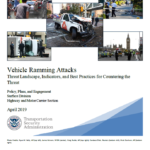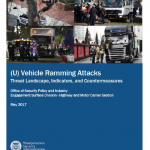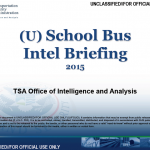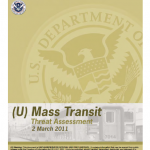
Based on our analysis of terrorist publications such as Rumiyah and observations of terrorism-inspired events worldwide, we believe terrorist organizations overseas have advocated conducting vehicle ramming attacks against crowds, buildings, and other vehicles, using modified or unmodified large-capacity vehicles. Such attacks could target locations where large numbers of people congregate, including sporting events, entertainment venues, shopping centers, or celebratory gatherings such as parades.






